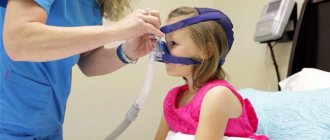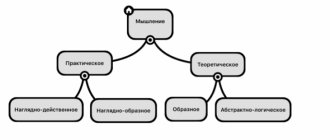This disease affects muscle tone, depriving children of the ability to act purposefully and move in a coordinated manner. The main cause of its occurrence in infants is due to brain damage. This can happen during pregnancy or during childbirth.
It happens that the disease begins to develop in the first months of the baby’s life, but such cases are quite rare. In the first weeks of a baby’s life, doctors can recognize the symptoms of cerebral palsy and give recommendations to parents on their further actions. No matter how dire the prospects for this disease may be, there is a chance for recovery. The earlier treatment is started, the greater the chances that such a serious disease will be overcome. The main thing is not to give up and not give up.
It is the task of attentive parents to note any violations in the baby’s behavior and report them to the pediatrician. It is not easy to detect manifestations of this disease in infants, but it is possible.
So, let us list the following symptoms of cerebral palsy in a newborn.
Symptoms of cerebral palsy in newborns
Signs of cerebral palsy develop gradually, so it is almost impossible to suspect disorders immediately after the birth of a baby. However, there are a number of symptoms indicating damage to one or another part of the newborn’s brain. Cerebral palsy is characterized by a division into three stages - early (from birth to 5-6 months), initial residual (from 6 months to 3 years) and late residual (from 3 years and older).
Diagnosis of cerebral palsy in newborn infants is based on signs characteristic of the early stage of development. These include:
- Pathological disorders and difficulties of the sucking and swallowing reflex. It is not difficult to notice such problems; they manifest themselves in the fact that the baby weakly takes the breast and does not demonstrate the natural desire for a newborn to suck. If the swallowing reflex is impaired, the child experiences difficulty swallowing - he chokes or the milk simply flows out of his mouth.
- Lack of response to sound starting at 1 month of age. With normal hearing development in a newborn, from 2-3 weeks after birth he begins to distinguish the mother’s voice, and by the first month of life he reacts to loud sounds. This reaction manifests itself in the form of facial changes, a sigh, or wide opening of the eyes. If this reaction is not present by one and a half months, then neurological hearing impairment is likely, as one of the signs of the initial stage of cerebral palsy.
- Lack of focused gaze after 2-3 months. By the end of the first month, the baby is already learning to focus his eyes on light sources; at 2-3 months he reacts to moving objects. Delayed development of the visual system may be one of the symptoms of cerebral palsy.
- Inadequate reaction to turning the baby onto his tummy, difficulty spreading his legs or turning his head. As a rule, kids love massage and gymnastics. If, during normal exercise for newborns, a child shows signs of restlessness and cries, this may mean that he is experiencing pain and discomfort due to improper development of skeletal bones and joints, as is often the case with cerebral palsy.
- The child takes unnatural and uncomfortable postures from the point of view of normal development. This symptom is characteristic of cerebral palsy, since initial pathological changes in the skeleton and joint contractures lead precisely to the adoption of strange body positions.
If a child of about 3 months shows a tendency to the same type of repetitive movements, then this can also be caused by the development of cerebral palsy. Subsequently, at the initial residual stage of cerebral palsy, such children experience a lag in physical and mental development - they do not hold their head up well, and for a long time they cannot learn to sit, stand, or crawl on their own. They retain the reflexes characteristic of newborns (grasping, palm-oral) much longer than normal.
How does cerebral palsy manifest in newborns?
How does cerebral palsy manifest in newborns?
For the prognosis of the disease, the principle is important: the earlier the diagnosis is made, the more effective the treatment will be. Therefore, it is very important to examine the child in the maternity hospital. Children from risk groups need to be especially carefully monitored: - premature babies, - low birth weight babies, - with congenital malformations (even minor ones), - children who contracted an infectious disease from their mother during pregnancy, - whose birth was accompanied by the use of obstetric forceps, - vacuum extractor and other devices, children who for one reason or another are on artificial ventilation, - those who received a low score on the Apgar scale (from 0 to 5 points), - children with severe neonatal jaundice.
When examining a newborn, the doctor checks all reflexes and muscle tone. If brain damage is suspected, special methods are required: - Ultrasound of the brain (has diagnostic value only in combination with the child’s complaints and symptoms) - EEG (electroencephalography) - if seizures occur, CT and MRI if necessary. These methods can detect hydrocephalus, cysts, hemorrhages or tumors in the brain. As a result, the doctor can make a diagnosis: encephalopathy, that is, brain pathology. This is precisely the prerequisite for the development of cerebral palsy. But, unfortunately, the term encephalopathy is very often used unreasonably. We must not forget that children in the first 6 months of life may experience increased excitability, slight tremor of the chin and arms, and increased tone of the limbs. All this is an individual feature, does not require treatment and goes away once the baby begins to crawl and walk. Therefore, it is important to find a qualified pediatrician who can distinguish physiological muscle tone from the first signs of cerebral palsy.
In newborn children, as a rule, it is very difficult to diagnose the disease. However, cerebral palsy is often present from the first days of life. You can suspect a problem due to some symptoms, among which the most common are the following: - limited movement; - the baby sleeps most of the time; - impaired swallowing process; - muscle weakness; - the baby hangs passively on the arm; - difficulty sucking, chewing, swallowing; - the baby spits up, coughs (this happens very often); - he may vomit repeatedly; - the sounds that the child makes seem strange (this applies to screaming, and later to babbling and humming); - change in the baby's voice; - The baby makes sounds with a delay.
If signs of the disease do not appear in the first days of the baby’s life, they may appear a little later, when the mother begins to actively care for the child. So, she may experience difficulties while bathing, feeding, dressing the baby, when, for example, his body suddenly becomes stiff for a while, his limbs freeze. Or, on the contrary, the child’s muscles are so weak and his body is weak-willed that it seems as if he is going to fall. At first, muscle tone is reduced, that is, the muscles are relaxed, and increased tone is typical for children aged 6 months and older. Diagnosing the disease at such a young age is very difficult. Signs of the disease appear in infants only if the disease is severe.
Methods of osteopathy in the diagnosis and treatment of cerebral palsy in newborns
Unlike neurological methods, osteopathy uses exclusively manual techniques and techniques to diagnose and treat diseases. The osteopathic doctor uses his fingers to identify blocked and damaged areas of the head and body.
Osteopathic treatment for cerebral palsy allows for the correction of various disorders in the early stages of the disease: from joint dysplasia to displacement of the skull bones and hydrocephalus. You should contact an osteopath immediately after the birth of a child, even if the parents have no reason to suspect cerebral palsy, in the following cases:
- During pregnancy, the woman suffered from an infectious disease;
- The pregnancy proceeded with complications and suspected hypoxia;
- Prolonged or complicated labor using instrumental methods for obstetrics (forceps, plungers).
The cause of cerebral palsy is most often organic damage to the brain, birth trauma and microtrauma of the cranial bones. A consultation and course of treatment with an osteopath in the first 3 months of life will help get rid of cerebral palsy or significantly improve the child’s health and quality of life in the future.
Features of motor development of premature babies
I would like to immediately note that children’s psyche often recovers much faster than their motor skills. Therefore, the issue of development of motor function and coordination should be given increased attention.
- From the moment of birth to the age of 4.5-6 months, premature babies lag significantly behind full-term babies in development.
- In the period from 4.5 months to six months, the speed of motor development increases slightly. If we involve specialists in the rehabilitation process, the pace of development can catch up with full-term children.
- From 6 to 9 months, there is again a decrease in the rate of development of premature babies compared to full-term babies.
- After 9 months, in the most favorable case, leveling off of the motor lag occurs. Movement and balance are normalized by the age of 13-18 months. There is awkwardness and clumsiness in movements, but this goes away by 42 months or earlier if special classes and rehabilitation are carried out.
Premature babies catch up with their peers in motor development by 20 months, and in speech development by 2 years. These are approximate dates - it all depends on the individual neurological disorders that appeared as a result of premature birth.
Signs of cerebral palsy in infants
Signs of cerebral palsy in a newborn are divided into early and late. However, during the first month, parents are unlikely to be able to recognize the presence of the disease, since the symptoms are still mild. And yet, if you carefully observe, the following signs can be found in a milk-fed baby in the first month of life:
- the child does not fix his head well (this symptom will not appear immediately, since in the first few weeks the baby, according to physiological indicators, will not be able to fix it);
- weakness in some muscles;
- presence of movement disorders;
- delayed development (for example, the child does not turn over within the prescribed period or does not begin to crawl);
- the presence of unconditioned reflexes (proboscis - when touching the lips they protrude into a tube, palmar-oral - when simultaneously pressing the palms the mouth opens slightly, search - when touching the tip of the mouth the child turns his head in that direction);
- increased muscle tone;
- the appearance of seizures.
The best prevention of the disease is the attentive attitude of parents to their child.
Treatment of cerebral palsy in premature babies
I developed a unique treatment method called the Nikonov method. Using a set of manual techniques, the muscle cell is freed from swelling and movement is restored.
Immature cells do not respond to medications; medication cannot solve the problem !
In premature babies diagnosed with cerebral palsy, movement in the muscle cells is restored if the swelling is eliminated and the cell nuclei return to the center. When the cell's nucleus is in the center, the cell's chemical power plants, the mitochondria, produce enough energy for the muscle to begin to stretch freely.
This is how swelling in the back muscles of premature babies decreases when exposed to the Nikonov method:
Doctor Nikonov
I have experience in preventing the development of cerebral palsy in a premature baby who weighed only 730 grams at birth! Already at one and a half years old he walked like his peers. After eye surgery, my vision was restored and there are no problems in this area. As a result of treatment using my method, obstructive bronchitis completely disappeared. At one and a half years old, Bogdan fed with a spoon, without regurgitation, combed his hair with a comb and spoke a few words.
In the video below, Bogdan is 1.5 years old:
In the video below, Bogdan is 3 years old:
To continue the material on the topic, I will write a generally accepted point of view about the reasons for the birth of premature babies. You already know my point of view - swelling in the muscle cells of the fetus.
Babies born after 24 weeks
The development of advanced perinatal centers in the Russian Federation has led to a rapid increase in the number of premature infants with low and extremely low body weight. Today, the share of children weighing less than 1500 grams is 1-2%, and those weighing less than 1000 g is 0.5%. And although the survival rate of these children has noticeably increased, the risks of disabling pathologies have not gone away.
Babies born at 32-36 weeks experience problems with the development of pathologies and disabilities much less frequently than those born at 24-32 weeks. According to statistics, 1 out of 5 premature babies weighing 1500 g has several causes of disability. 32% of premature babies develop cerebral palsy, 15-44% develop bronchopulmonary dysplasia, 5-8% develop mental retardation, and 3-5% develop hydrocephalus. There are risks of developing blindness, hearing loss, and epilepsy.
Studying the health status of premature babies with very low body weight plays a key role - in the first year of life, it is possible to predict disabling pathologies earlier and carry out effective rehabilitation programs. Our Center practices early intervention, which prevents a high level of psychomotor disorders and somatic pathology in very premature infants.
The foundation of rehabilitation programs rests on three pillars:
- Early start of rehabilitation. We begin working with premature babies already at 5-6 months of life.
- Individual approach. We take into account age, maturity, severity of pathologies, concomitant diseases, genetic characteristics.
- Comprehensive rehabilitation. It includes physical, psychological and medication.
Traditionally, premature babies are prescribed a course of massage, but it is contraindicated in a number of cases and does not solve the problem of MR.
The task of our Center is not only to deliver a premature baby, but also to put him on his feet. And proven European rehabilitation methods help us with this.









